The fight over the future of Mount Washington

A train trundles up the side of Mount Washington, bringing owner Wayne Presby to the top. The wind moves fast at that height, where the weather can turn quick enough to kill. The train moves slowly, climbing up the steep grade at just under 5 mph. Presby recalls the Cog Railway as a broken toy he set out to fix when he bought it almost 40 years ago. By his own estimation, he’s succeeded.
"We restored this place and brought it back to its preeminence," he said. But one thing still evades Presby: mountaintop accommodation. He hopes Lizzie’s Station, his latest $14 million proposal to put a hotel and restaurant on top of the state’s tallest mountain, will be the final step in returning the railroad to its glory days.
That project has enraged those who believe it’s an improper use of what should be wild, and that it would harm the environment and draw even more visitors to an already overburdened area. Controversy over this project is just one piece in a longstanding disagreement about balancing access and environmental protection at a site that’s both extremely popular and fragile.
That debate is playing out as the commission charged with overseeing the state park finalizes its master plan, which will shape the summit’s future. The state has no current plan in place to manage the overuse of Mount Washington and protect it. And an advisory plan is only so helpful because the mountain is owned by different entities with, at times, competing priorities, from tourism to protecting the land.
Presby’s development, where visitors would be able to spend a night in railroad sleeper cars parked just below the mountain’s summit, would be right outside the state park. Its approval would ultimately fall to the Coos County Planning board. The railroad is proposing to create a new train station, visible from the summit, where 18 custom-designed Pullman style cars, including nine sleeper cars, would be parked on either side of the railroad tracks.
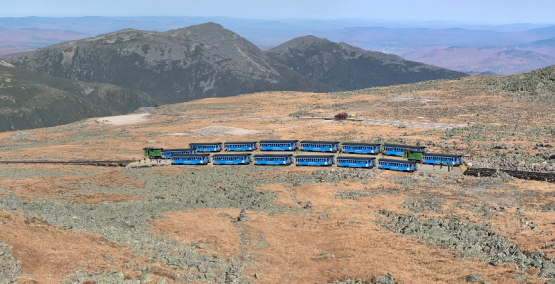
The railroad company proposed a similar project six years ago but abandoned the project after facing criticism from environmental groups and others who live near or use the mountain. This time, the state is supporting the railroad company, but hikers, environmentalists, and residents are voicing objections.
“The more you talk it up, the more they’re going to come and you overload the system. And you’ve got a system on the top of Mount Washington that is stressed out to the max,” Rick Davis, a Conway resident who has lived in the Mount Washington Valley for 70 years, told members of the Mount Washington Commission during an August meeting on the proposed updates to the master plan.
Those concerns were echoed by the more than 30,000 people who signed a petition opposing the proposed hotel and by other residents at the meeting. About 75 people were in attendance, with around 10 speaking on the master plan. The planning document sets a course for the future of the summit, and it aims to promote Mount Washington as a “must-see destination” while ensuring environmental protection.
“I don’t think there should be further development, whether it’s on state lands, or forest service lands, or private lands,” said Joe Egan, a hiker from Brownfield, Maine. Egan, 71, is a lifetime member of the Appalachian Mountain Club (AMC), which helps maintain two trails around the summit, and has been coming to Mount Washington for 52 years.
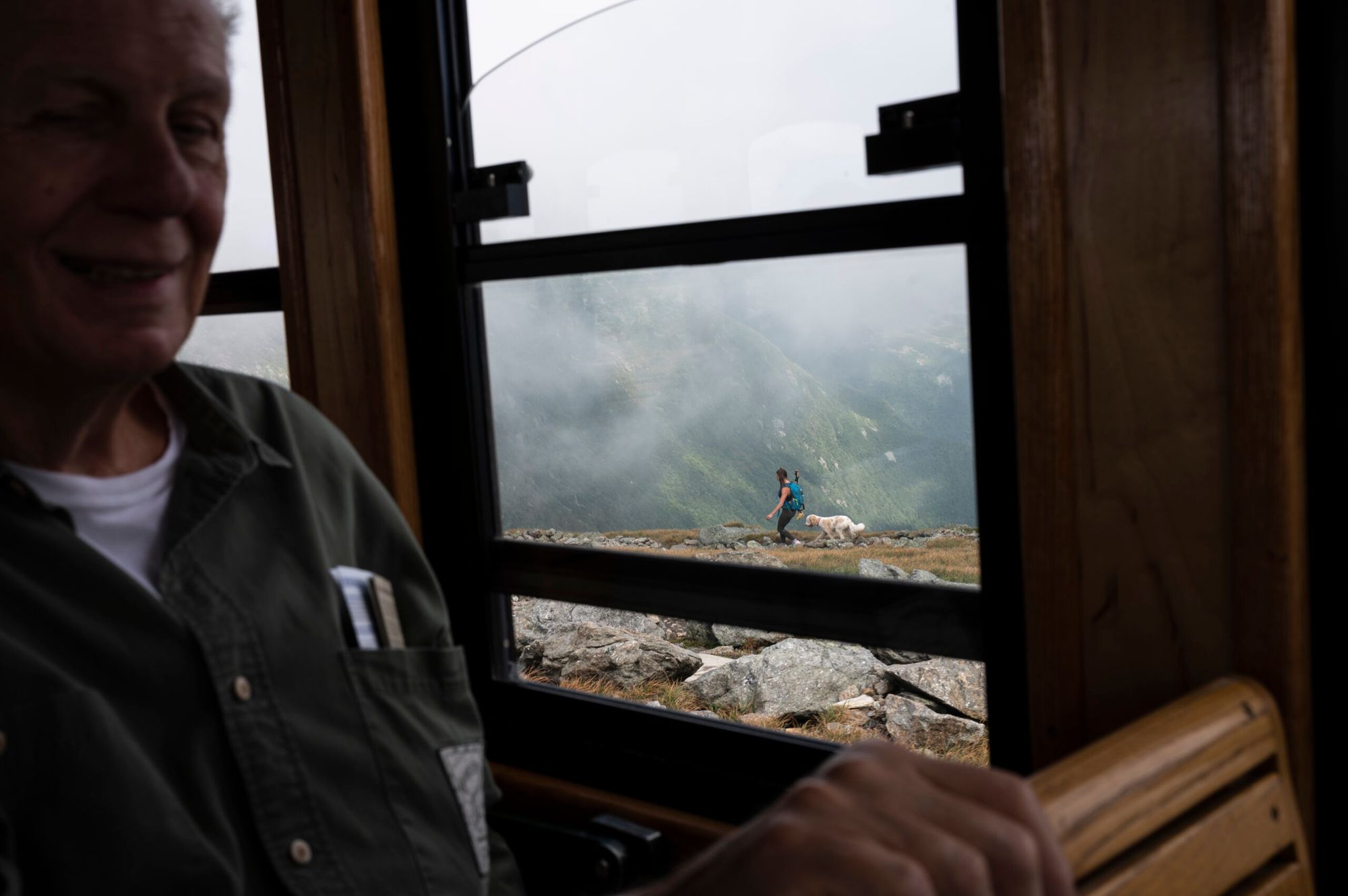
Receiving nearly 400,000 visitors annually, Mount Washington is an economic driver in the region. But those numbers have led to congestion at the summit. Presby said Lizzie’s Station would help by providing needed additional infrastructure like restrooms while actually delivering fewer people to the summit at a given time. But with no current environmental impact study, it’s hard to quantify the impact these visitors have on the fragile alpine environment. If approved, the commission would use the master plan to ask the Legislature to fund a new environmental assessment.
But controlling what happens at the top of the summit is complicated because of the web of private and public groups that have different rights to that land. On the very top of the summit is a state park that’s been around since 1964. That park houses the Mount Washington Observatory, an educational nonprofit. On the 800,000 acres below the summit spreads the White Mountains National Forest, public land managed by the U.S. Forest Service. The Appalachian Mountain Club, a nonprofit outdoor group, operates a hut that can sleep 94 people at 5,012 feet elevation, and the group conducts research and educates the public about the summit.
Meanwhile, two private entities bring around 300,000 visitors to the summit each year: the Mount Washington Railroad Company, also called the Cog, which has operated since 1869, and the Mount Washington Auto Road, which opened eight years prior. Both own land and have a right of way on the summit that allows them to operate a railroad and auto road on public land.

The Cog is behind the proposed development: Lizzie’s Station would consist of specialty train cars parked around 800 feet below the summit that could accommodate 70 overnight guests from mid-May to mid-October. The station is named for Lizzie Bourne, a 23-year-old hiker who perished there in an 1855 storm, unable to find refuge on the summit just 600 feet away. The development would involve drilling a new well and installing up to 16,000 feet of eight-inch pipe to bring wastewater off the mountain.
Lizzie’s Station would be built on the railroad’s property and require a zoning variance from the Coos County Zoning Board, which federal authorities would have an opportunity to weigh in on. The project would then have to clear the county planning board. The railroad hopes to apply for a zoning variance as early as December and submit materials to the planning board by March 2023, according to the railroad’s attorney, Earl Duval.
‘Restoring this place to its glory’
Presby, 65, said the railroad was in poor condition when he bought it nearly forty years ago. His vision was to return it to its heyday – when it operated a hotel and brought guests to stay overnight at the top of the mountain.
“Historically, there always were accommodations on the summit,” Presby said. “Lizzie’s would be the culminating part of restoring this place to its glory.”
The railroad has built two hotels on the summit of Mount Washington in the past, according to Presby. The first, built in 1872, had 110 rooms, but burned down in 1908. It was replaced by a 35-room hotel and dining facilities. That was still in existence in 1978 until it was torn down to make room for a new state-run building that houses a food court and the current Mount Washington Observatory.
But there are conflicting views about what makes Mount Washington glorious. Some in outdoor conservation argue that the Cog detracts from the wilderness experience and that luxury accommodation would make it worse. Zach Porter, the executive director of a grassroots coalition Standing Trees, said the Forest Service pointed to the Cog’s negative impact in its 2005 Forest Plan. “The Cog Railway, with its associated sites and sounds, has a negative effect on the Wilderness experience,” the plan states.
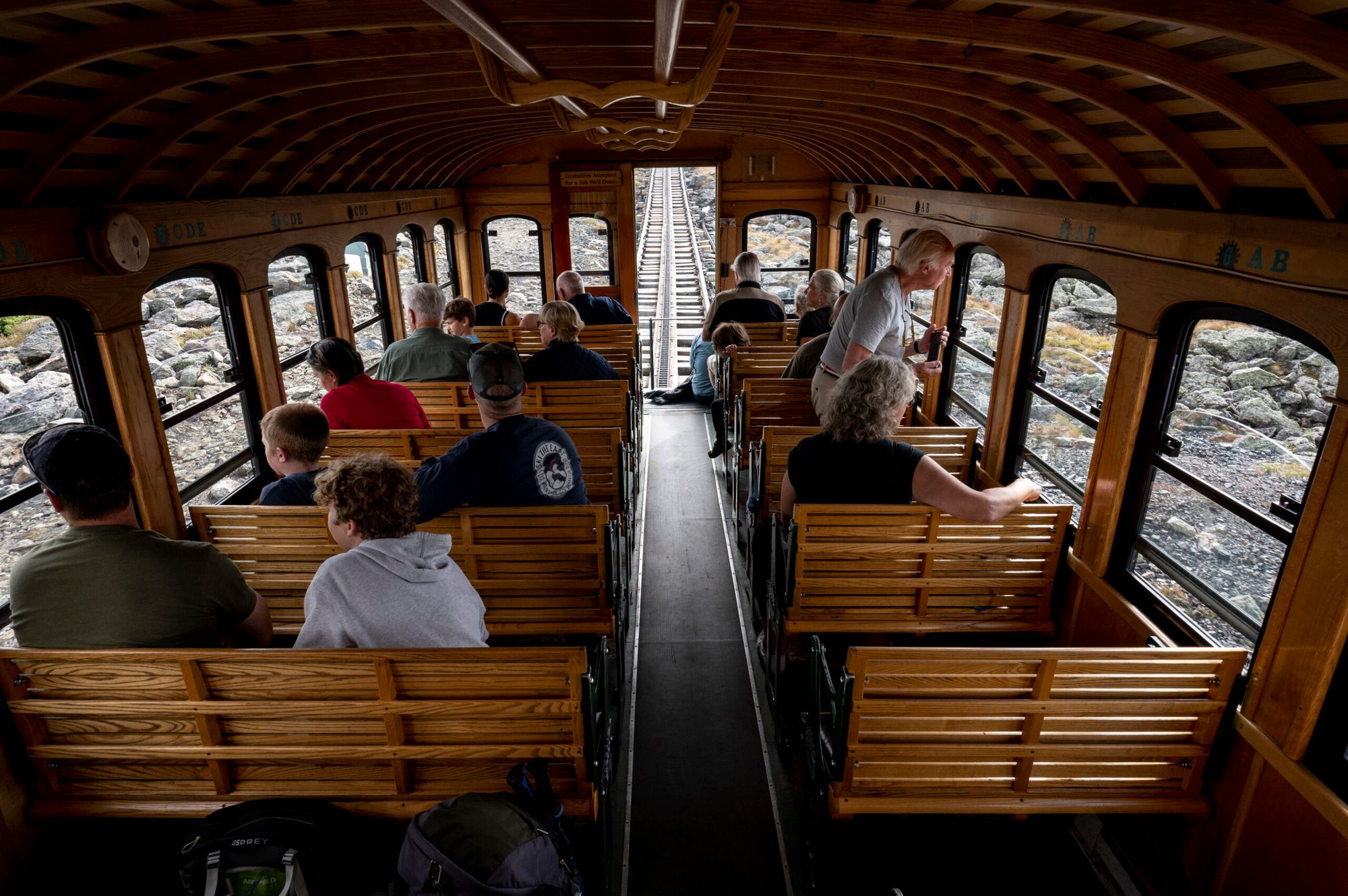
The Lizzie’s Station proposal is one part of a broader cultural clash in the North Country over outdoor recreation and the role of tourism. Abby Evankow of Gorham said it was the quiet and the night sky that drew her to living in the North Country – and what she calls the human powered trails. Now she sees that being deteriorated.
“I know a lot of people who are employed by the Auto Road, and the AMC, and the Cog,” said Evankow. “So we need this, but if you destroy it in the process of making your money … It’s this extractive mindset. You come, you use it up, and then you leave.”
Presby said it’s elitist of hikers who would prefer the mountain without the access provided by the Cog.
“Why deny these people access?” he said. “That’s like saying ‘to hell with the handicapped.’ They want to limit the people coming to the top – let’s limit the number of people going to North Conway because it’s a g—— zoo.”
It’s not the first time Presby has tried to build lodging along the railroad – he proposed another hotel lower down on the mountain on a part of the tracks called Skyline in 2016. That project also faced public opposition and never made it before the planning board.
But Lizzie’s Station has the state’s backing. In June, the Executive Council approved a memorandum of agreement that the state will support the railroad’s permit application before the Coos County Planning Board, in addition to any other permits, licenses or approvals necessary so long as they don’t conflict with the state’s other legal obligations. In exchange, the Cog agreed to not pursue further development at the summit.

Sarah Stewart, commissioner of the Department of Natural and Cultural Resources, signed off on that agreement, which she called a compromise that would prevent the Cog from growing its presence at the summit.
“Hundreds of people get off the train and go into the Sherman Adams building and hundreds of people get on, so it’s congested up there,” Stewart said in an interview. “If they were going to move forward with a development like Lizzie’s station on their own property, then we need to limit their ability to develop anything further at the summit.”
And Presby said the new project would ease congestion at the summit – passengers would disembark at Lizzie’s Station rather than the summit. Visitors could then reach the summit by a hiking path or a separate train that would shuttle them to the top, reducing the number of people getting on and off the train there from 560 at peak times to 140. The state and other commission members agree that’s a strength of the project.
A 'flabbergasting' approach
But this collaboration between the state and the railroad has been criticized for both what it would accomplish and how it’s been forged. That criticism has come from members of the public and from at least one member of the Mount Washington Commission.
“Congestion is powerful evidence of the state’s mismanagement of Mount Washington State Park,” Jamie Sayen, of Stratford, wrote in commentary published by InDepthNH. “Limiting access, not additional development, is the way to reduce congestion.”
Limiting access, not additional development, is the way to reduce congestion.
Hikers and environmentalists have pointed to the American Pipit, a songbird that nests and breeds on Mount Washington, as one species that hangs in the balance. The bird is a species “of special concern” which could become threatened if its breeding habitat isn’t protected, according to a 2021 report by the New Hampshire Audubon Society.
“All known pipit nests were confined to a narrow band of alpine habitat located from 5,200 to 5,800 feet,” the report found. Lizzie’s Station would sit at 5,700 feet.
Rare plants are also found in the alpine area, like Robbins’ cinquefoil, a small perennial flower that became endangered in 1980 after getting trampled by hikers, according to Sayen. It was delisted in 2002 due to protection efforts. And the rare White Mountain fritillary butterfly is also found at the summit.
The Cog’s attorney, Duval, said he met with faculty at UNH with the hope of working with the university to protect these species.
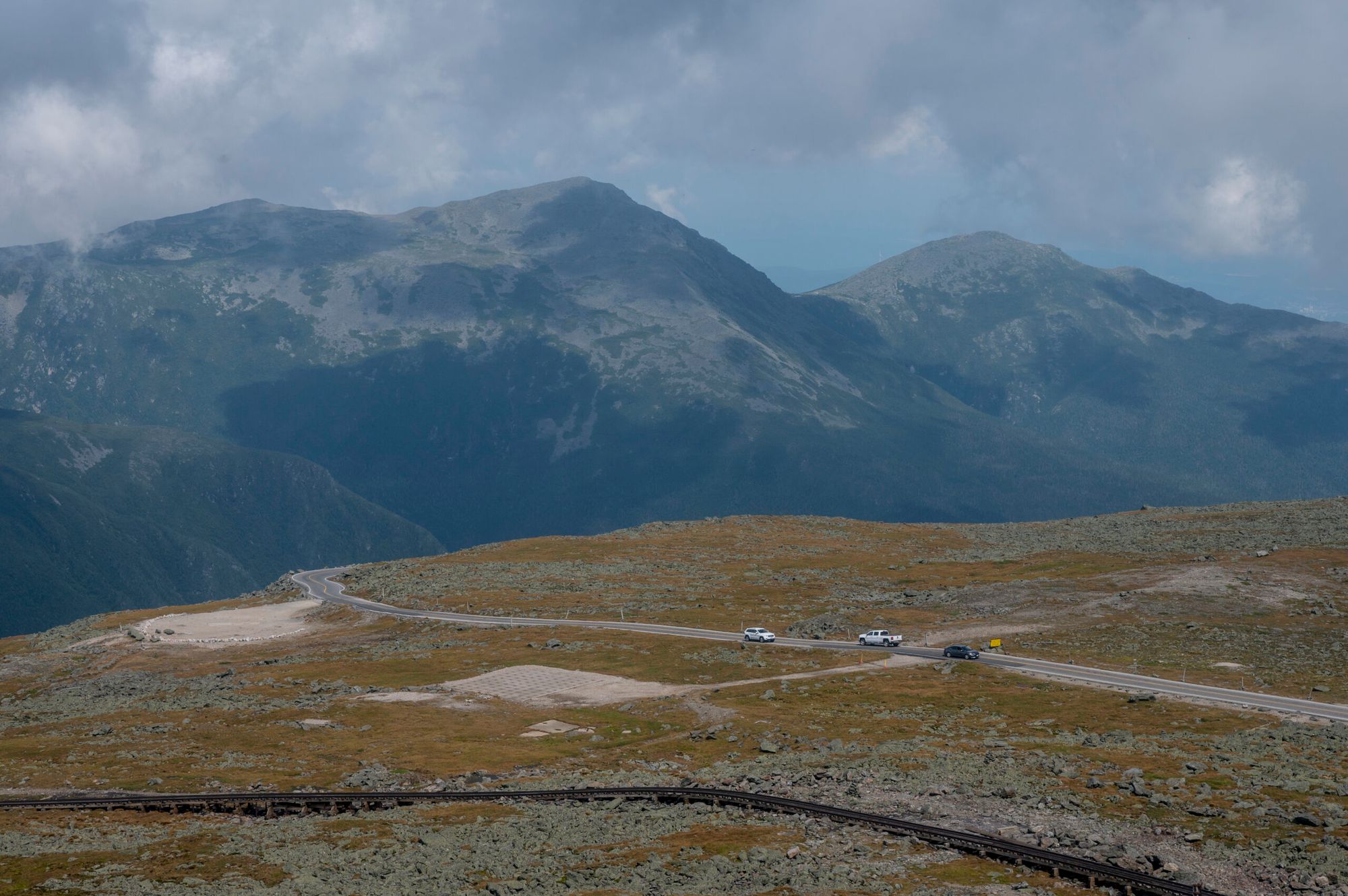
Some community members called for “strategic retreat” from the summit during a North Conway meeting on the state’s master plan. “Who speaks for the mountain?” one attendee asked.
Stewart said that outcome was unlikely, given the importance of communication antennas that are used for public safety including by the FBI that need to be staffed on the summit. But she said the state needs to assess the site’s capacity and completing an environmental impact study would help make that determination moving forward.
“It’s an established site, worth preserving, worth bringing future generations to, and we can do a much better job of how we manage the people up there,” Stewart said. “It’s a free for all right now. There’s no path.”
Presby disagreed with halting development. “Mount Washington is not an undeveloped place,” he said. “Certain mountains have become commercialized. This is one of them. You’ve got every other peak.”
Certain mountains have become commercialized. This is one of them. You’ve got every other peak.
And one member of the Mount Washington Commission criticized the state’s agreement with the Cog.
“How can the state have said we endorse this project and we’ll show up at whatever meetings are necessary to make sure that you get permitted to do this? How can they say that when they don’t know what the details are?” said Howard Wemyss, who serves on the commission representing the Mount Washington Auto Road.
“It just flabbergasts me,” he said.
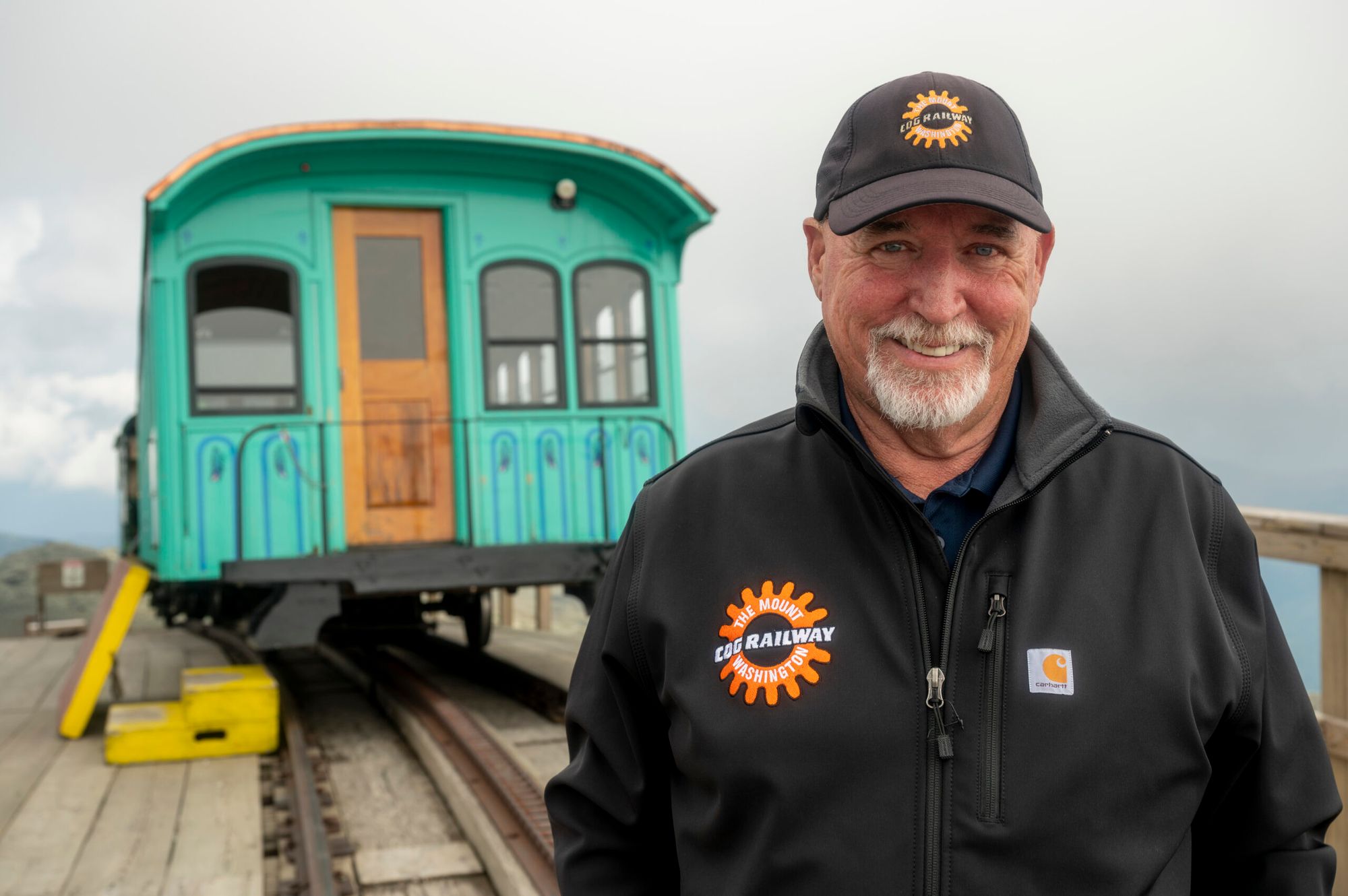
Wemyss argues that the process should have involved the Mount Washington Commission, pointing to a provision in the agreement that would allow the Cog to apply for a special use permit to operate a coach within the summit circle for shelter, shopping, and snacks when the state closes its operation.
“The part that really bothers me is that in the offseason, when the state park is closed, the Cog has the right to put some of these specialized cars on the summit. How can that not have been brought before the commission?” said Wemyss.
Duval, the Cog attorney, said the proposal was presented to the commission in March, and that the Cog has been transparent about its plans, inviting members to the railroad and arranging individual meetings to discuss the project.
“We will meet with everyone,” he said. “We will be completely transparent.”
Whether Lizzie’s Station gains approval or not, the bigger issue about capacity at the summit – and how to balance access and environmental protection – remains.
“I think that’s a core of the frustration,” Stewart said. “Outdoor recreation is booming, but it’s not sustainable. So we do have to find that balance.”
This story was produced by the editorially independent New Hampshire Bulletin, which is not affiliated with Granite Memo.
